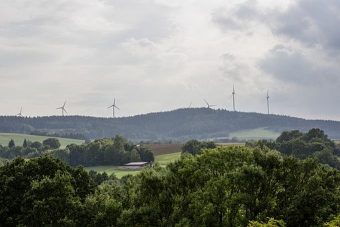
Tesla has announced that it will install the world’s largest grid-scale battery — 100 MW/129 MWh — in South Australia. The installation will be located in Jamestown in the north of the Australian state and will receive electricity to be stored from a wind farm operated by French energy company Neoen. Tesla broke the news late yesterday and CEO Elon Musk retweeted it out.
The story of how this project came to be is a fascinating tale. On September 28, 2016, freakishly high winds swept across South Australia, home to the city of Adelaide. The storm toppled a number of towers supporting the region’s high-voltage power lines, some of which connected South Australia to generating facilities in nearby Victoria. In the aftermath, members of the Australian government from the prime minister, Malcolm Turnbull, on down inexplicably blamed the blackout on too much renewable energy surging through its electrical grid.
This reaction came despite a statement by Australian Energy Market Operator, the grid operator, which categorically denied that renewable energy had anything to do with the blackout:
“There has been unprecedented damage to the network (i.e., bigger than any other event in Australia), with 20+ steel transmission towers down in the north of the State due to wind damage (between Adelaide and Port Augusta).
“The electricity network was unable to cope with such a sudden and large loss of generation at once.
“Australian Energy Market Operator’s advice is that the generation mix (i.e., renewable or fossil fuel) was not to blame for yesterday’s events — it was the loss of 1000MW of power in such a short space of time as transmission lines fell over.”
That statement was pretty clear, no? Nonetheless, it didn’t stop anti-renewables talking heads and media outlets from politicizing the unprecedented event.
Australia has enormous amounts of coal reserves, enough to meet its energy needs for 1,000 years. Some shortsighted leaders think it would be a great idea to dig up and burn all of that coal rather than fiddle around with newfangled ideas like wind turbines and solar panels.
Ever since last September, blackouts have afflicted the state of South Australia. That prompted Elon Musk in March of this year to offer to fix the area’s energy problem with a massive grid-scale battery. He boasted he could install such a system within 100 days of signing the necessary agreements. If not, the system would be free, Musk tweeted.
On July 7, Musk told the press in Adelaide that the project represented a significant challenge since it would be the largest grid-scale battery installation in the world “by a significant margin.” He added, “When you make something 3 times as big, does it still work as well? We think it will, but there is some risk in that. We’re confident in our techniques and the design of the system.”
Musk’s claim that the system will be 3 times larger than any other in the world represents a bit of hyperbole, something Musk is no stranger to. Tesla installed an 80 MWh system for Southern California Edison last year. That installation was completed in just over 90 days.
A Musk tweet today was more specific, indicating the tripling is in regards to power, not energy capacity.
To clarify, energy capacity (the MWh figure) is how much electricity the battery can store, whereas power capacity (the MW figure) concerns how quickly power can flow in or out of the battery. For more details on this topic, check out: “The Great ‘Power vs. Energy’ Confusion.”
Fed by the nearby wind farm, the Tesla battery system is expected to stabilize the grid and lower the price of electricity for utility customers.
“You can essentially charge up the battery packs when you have excess power when the cost of production is very low … and then discharge it when the cost of power production is high, and this effectively lowers the average cost to the end customer,” Musk said. “It’s a fundamental efficiency improvement for the grid.”
Tim Flannery of The Climate Council said South Australia was taking a leading role in Australia’s transition to renewable energy and storage technology. “South Australia is tackling climate change head on and should be congratulated for its innovation and leadership as it transforms our energy system into one that’s clean, affordable, efficient and secure. South Australians are witnessing first hand how swiftly this technology can be built and used, with the battery expected to be up and running this summer.
“South Australia joins the likes of California as a world leader in demonstrating how renewable energy and storage technologies can power our economy cheaply and cleanly. Renewables like wind and solar are now the cheapest power source available. We need to roll out this technology swiftly in a bid to tackle climate change.”
Source: cleantechnica.com





